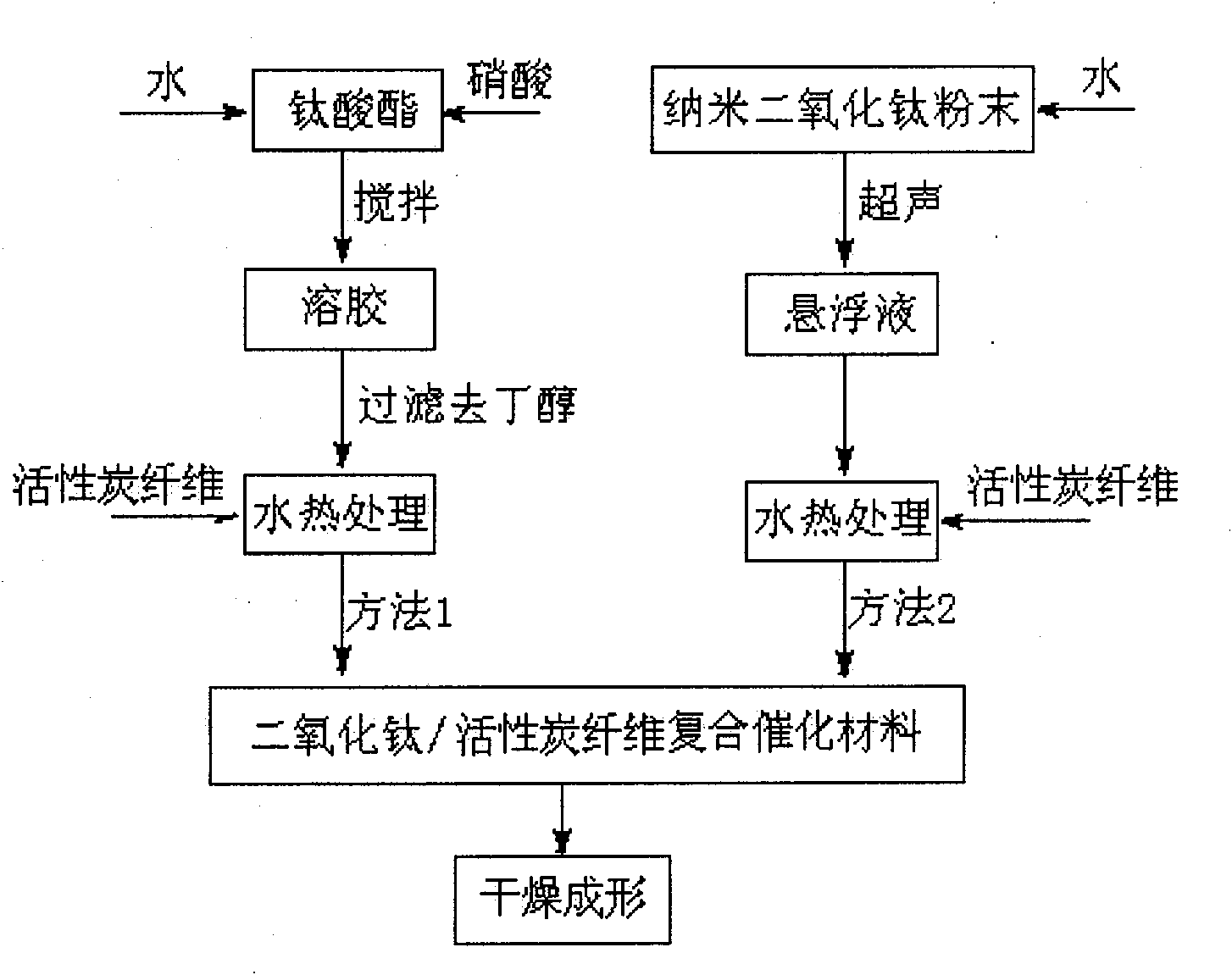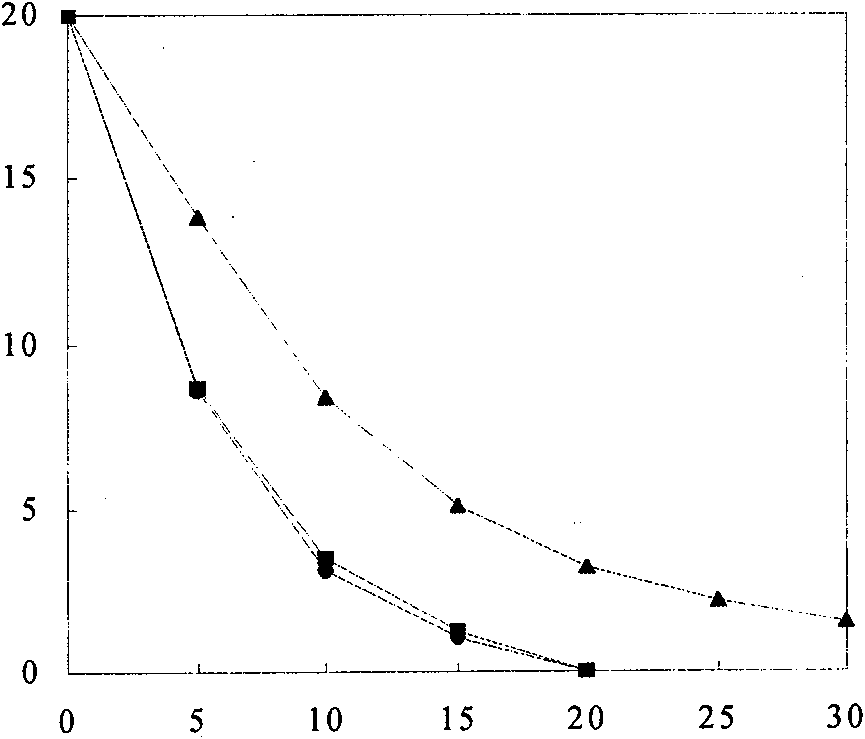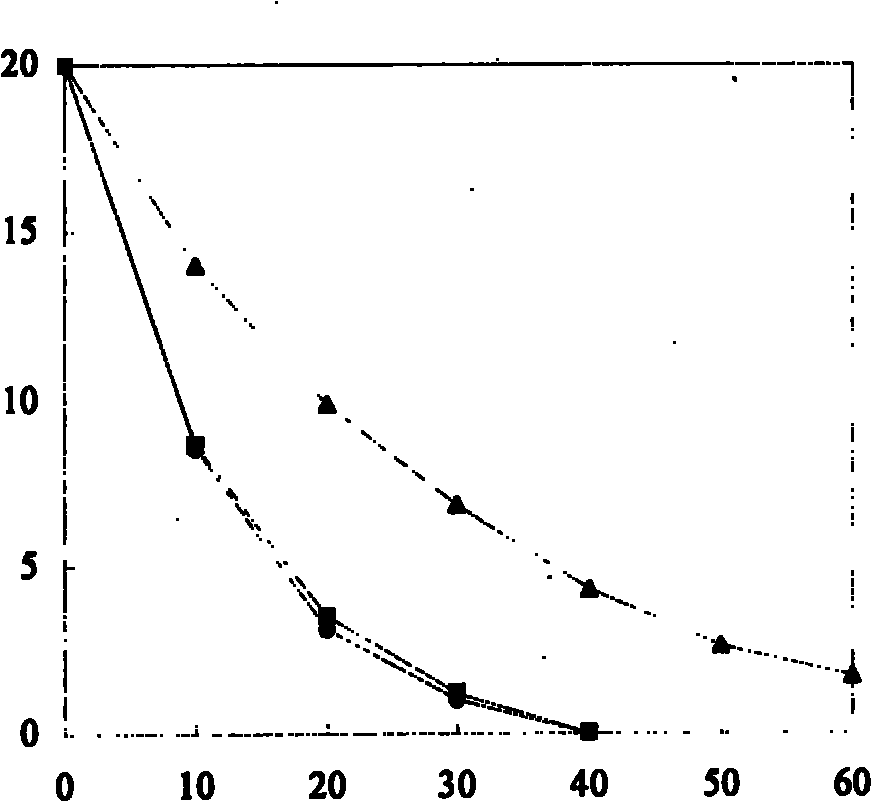Preparation method of composite photocatalytic material for fresh-keeping of fruit and vegetable
A technology of composite photocatalysis and catalytic materials, applied in the field of preparation of catalytic materials, can solve the problems of low photocatalytic efficiency, weak bonding between titanium dioxide and carrier, poor adsorption capacity, etc., achieve uniform composite, improve photocatalytic efficiency, improve adhesive effect
- Summary
- Abstract
- Description
- Claims
- Application Information
AI Technical Summary
Problems solved by technology
Method used
Image
Examples
Embodiment 1
[0020] Embodiment 1: Preparation of titanium dioxide / activated carbon fiber composite catalytic material by sol
[0021] Add 0.1mol (34g) tetrabutyl titanate dropwise to 360ml, 1M aqueous nitric acid solution under stirring at room temperature, drop and stir while controlling the dropping and stirring speed, continue stirring for 2 hours after dropping, tetrabutyl titanate The ester is hydrolyzed to form a slightly light yellow transparent sol. After standing for several hours, the decomposed butanol is layered with the sol, and floats on the upper layer in a light yellow color. The butanol layer is separated to obtain a nearly colorless sol. Add 3g of activated carbon fibers to the prepared sol and put it into a pressure-resistant container. After hydrothermal treatment at 160°C for 10 hours, take out the activated carbon fibers containing titanium dioxide, and obtain sample 1 after drying.
Embodiment 2
[0022] Embodiment 2: Preparation of titanium dioxide / activated carbon fiber composite catalytic material by titanium dioxide powder
[0023] Add 8g of nano-titanium dioxide powder to 340mL of water, and ultrasonically disperse for 20min to obtain a white suspension. Add 3g of activated carbon fiber and put it into a pressure-resistant container. After hydrothermal treatment at 160°C for 5 hours, the same operation as in Example 1 was used to obtain sample 2.
Embodiment 3
[0024] Embodiment 3: prepare titania catalytic material by sol
[0025] Titanium dioxide sol was prepared by the same method as in Example 1, sprayed on a glass plate after hydrothermal treatment, and control sample 3 was obtained without adding activated carbon.
PUM
| Property | Measurement | Unit |
|---|---|---|
| particle size | aaaaa | aaaaa |
Abstract
Description
Claims
Application Information
 Login to View More
Login to View More - R&D
- Intellectual Property
- Life Sciences
- Materials
- Tech Scout
- Unparalleled Data Quality
- Higher Quality Content
- 60% Fewer Hallucinations
Browse by: Latest US Patents, China's latest patents, Technical Efficacy Thesaurus, Application Domain, Technology Topic, Popular Technical Reports.
© 2025 PatSnap. All rights reserved.Legal|Privacy policy|Modern Slavery Act Transparency Statement|Sitemap|About US| Contact US: help@patsnap.com



